Part II. Die Varieties:
Doubled Dies:
Class II
The next class, Class II, is harder to find empirical evidence to conclusively prove the cause of the Hub Doubling. Most often hypothesized as a misalignment event relating to either the Die or the Hub, which has expanded or contracted too much in relation to the first hubbing during the annealing or tempering processes.
Class II is characterized by having a spread along the outside devices from deepest to lightest hubbings, which goes toward the Center (C) or towards the Edge (E).
Dies are annealed (cooled slowly) to make them softer so they are more susceptible to taking an impression of the Hub. The Hub in contrast is tempered, quickly cooled, so that it is more durable and does not distort while transferring an image to the Die. If for whatever reason, either the Die or the Hub were not to return to its normal size in between hubbings, doubling could result like the illustration below of a fictitious 1960 Lincoln cent where doubling would be more pronounced toward the rims.
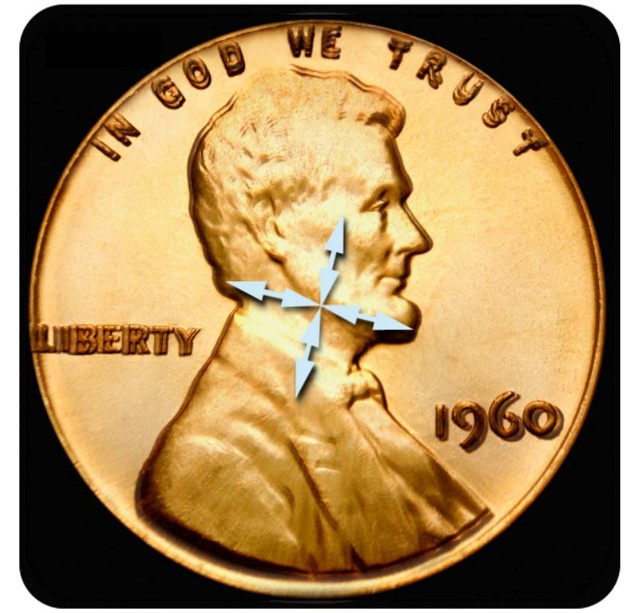
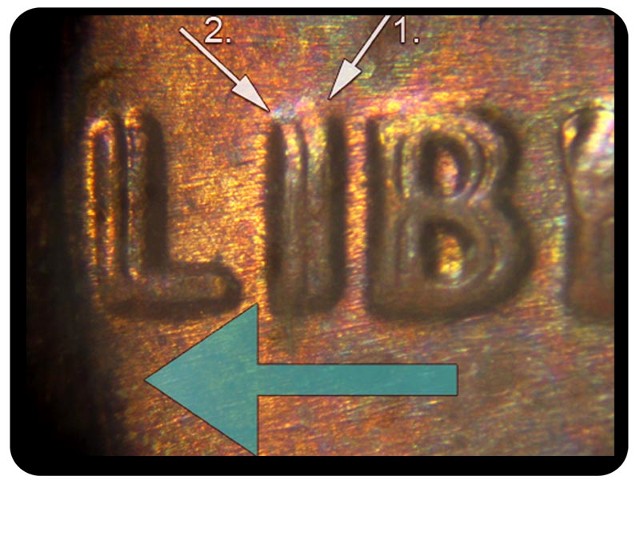

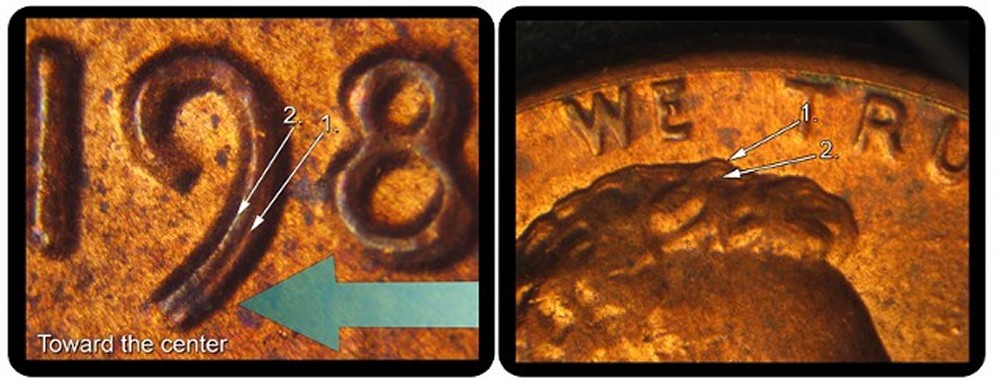
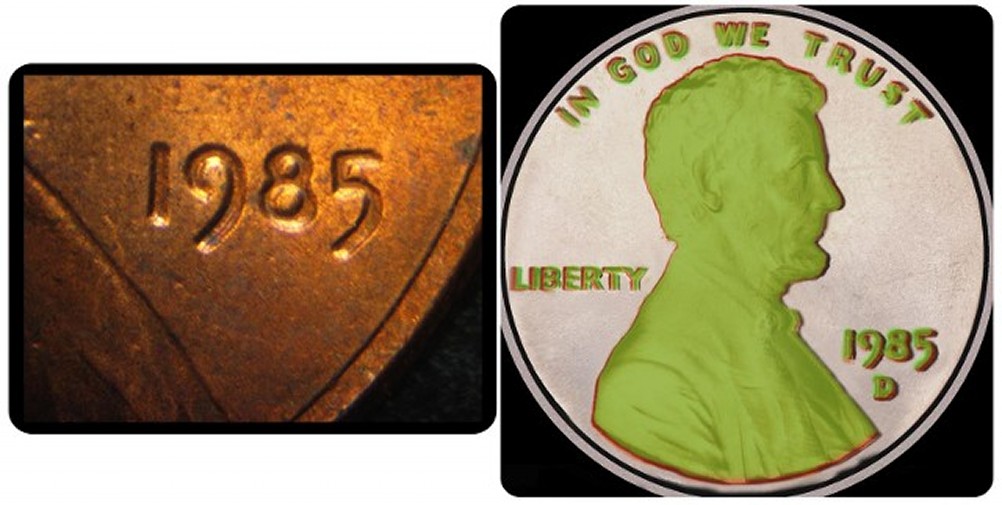
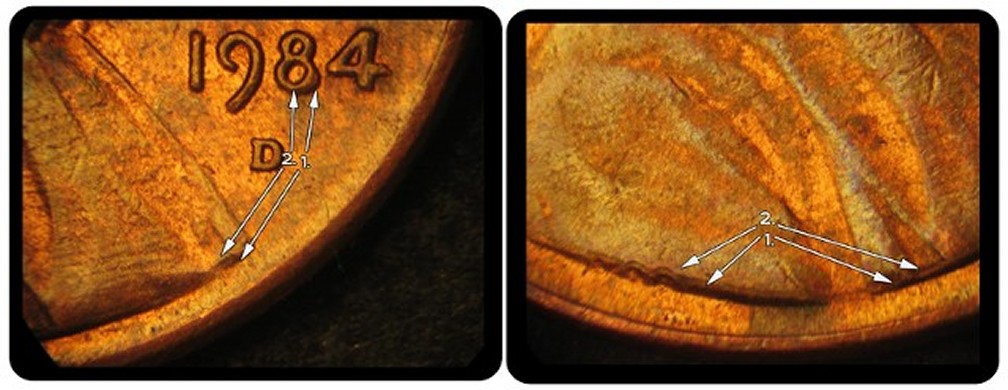
There is a large number of other Class II DDRs on the Lincoln cent from 1962 through 1964.

Here we can see a Jefferson nickel listed as 1962P DDR-015 (15-R-II-C) with a medium spread on the reverse that is visible on most devices. The doubling is more pronounced near the rim and gradually decreases as we navigate toward the center. Notice how light the spread becomes on FIVE and the beginning of MONTICELLO.


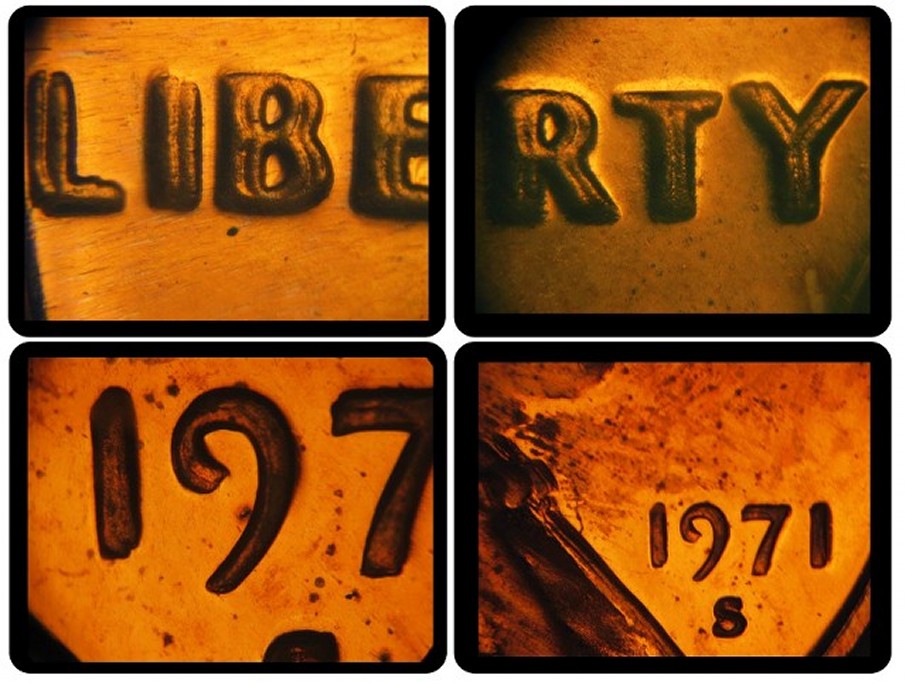
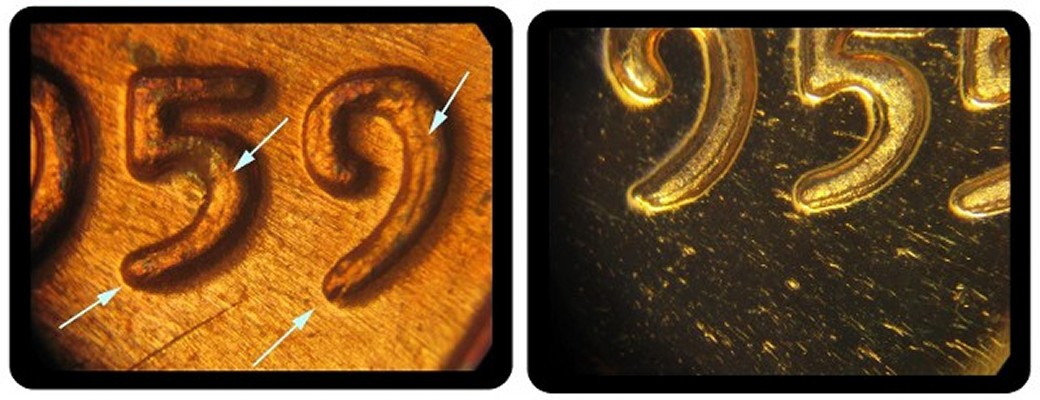
On to CLASS III
All doubled die illustrations are by Jason Cuvelier